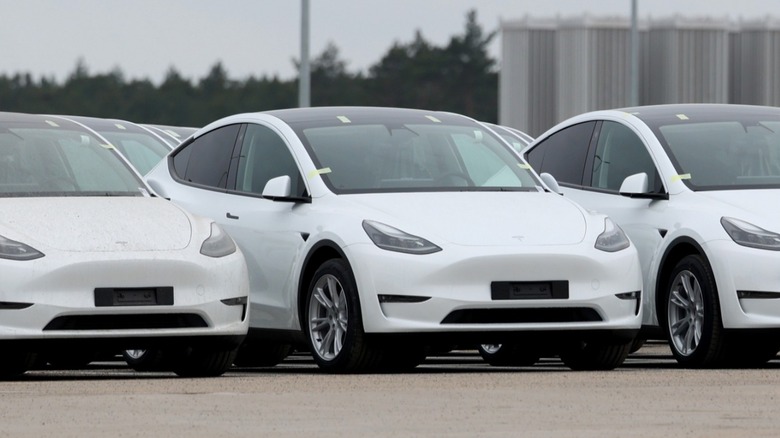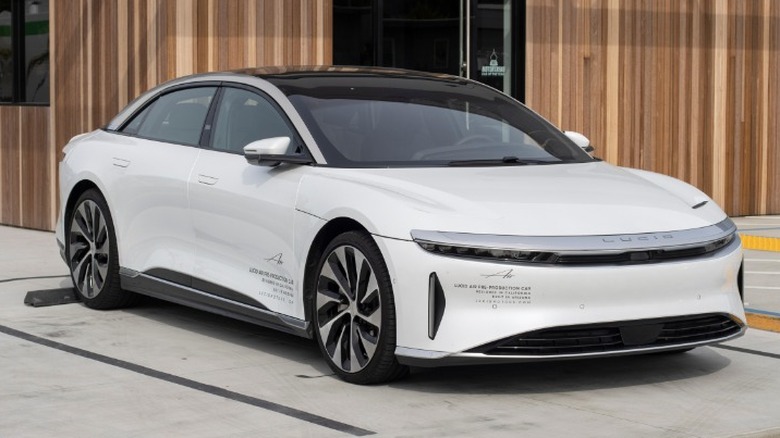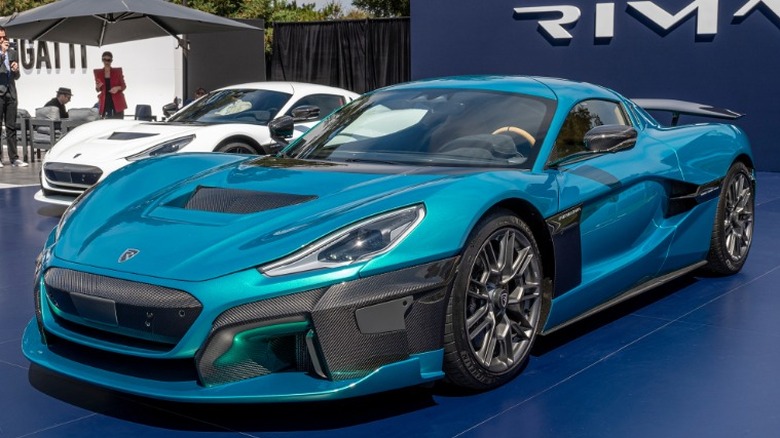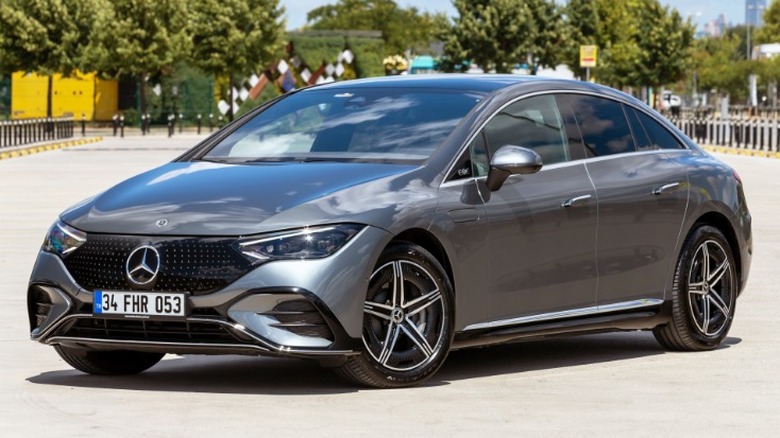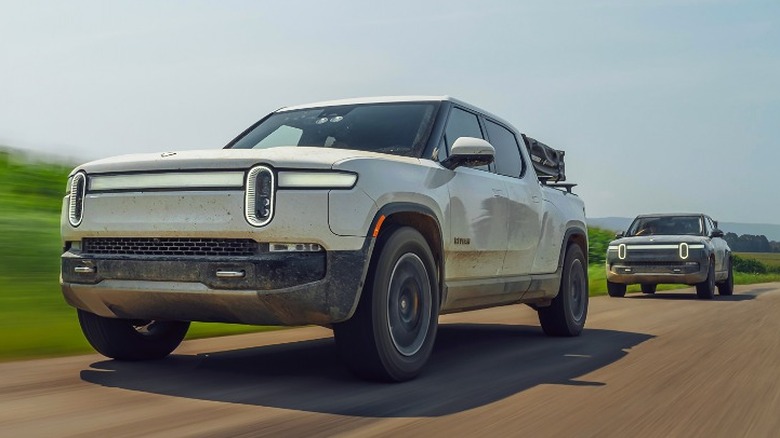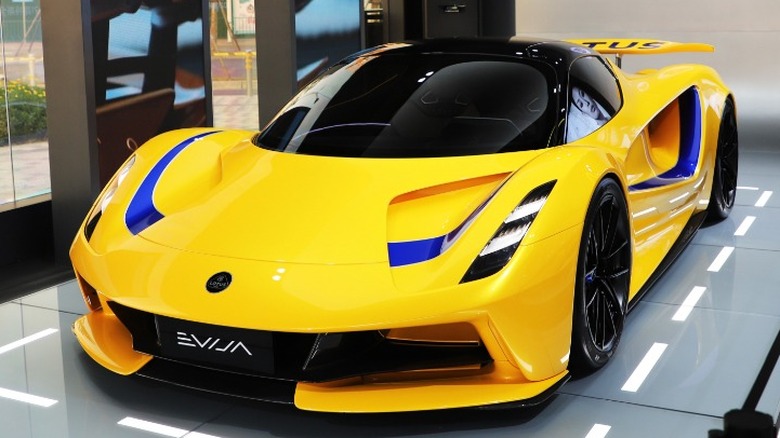Everything EVs Are Better At Than Regular Combustion Engines
The debate over electric vehicles (EV) versus internal combustion engine (ICE) vehicles is a hot topic at the moment and shall continue to be contested for the foreseeable future. The internal combustion engine has roots in the Victorian period when the industrial revolution had engineers and scientists working at a fever pitch to mobilize society. Likewise, the electric vehicle, which many may believe is a modern concept, also has roots in the industrial revolution as the widespread development of electricity and battery technology was equally integral to industrialization. In the early days of the 20th century, electric cars were a common sight on the streets of many cities, although gasoline engines would eclipse them as they became more reliable and user-friendly.
Today, the EV has made huge inroads into the transportation industry as a whole and legislation from across the globe is having dramatic effects on the cars being produced by nearly every manufacturer. EVs are being pushed as one alternative to curb the pollution produced by burning fossil fuels. EV adoption is also seeing strong pushback from some parts of society. Therefore, without passing judgment definitively as to which technology is better, these arguments explain what the EV does better than typical combustion engines.
Optimizing energy efficiently
In the process of turning any source of energy into kinetic energy (the energy of motion), there will be some losses. As the chemical energy is transformed into motion through internal combustion, most of the energy lost is heat and friction, to a lesser extent. According to Inside EVs, most modern engines achieve about 40% efficiency ratings, which means more than half of the energy stored in the fuel is lost to friction and dissipated heat. Nissan announced in 2021 that it has an engine in development that will achieve 50% efficiency but that it is only meant to be a generator in a hybrid system (via CNET). Furthermore, additional energy is lost throughout the drivetrain, and parasitic losses from other systems in the car further reduce the overall efficiency at the wheels.
Internal combustion engine efficiency has increased dramatically over the last century. However, technological breakthroughs in battery technology have allowed EVs to become viable for regular use, and they present a significant advantage in energy usage. Yale Climate Connections recently published an article noting the efficiency difference between the EV and ICE. With an EV equipped with regenerative braking, the total energy lost while driving is about 11%. Losses from the input to the motor initially amount to about 35%, but the regen braking recaptures about 22% of that. While this discussion gets in the weeds very quickly, the takeaway is that electric power is a significantly more efficient use of energy.
Operating quietly
EV manufacturers have promoted for a long time the quiet properties of the drivetrain. Without the need to burn fuel in controlled explosions to create forward motion, a lot of what causes the noise is eliminated. For some, this is a lamentable development as the rumble of a V8 engine, for example, is quite appealing. Sure, but even for the most fervent sports car enthusiast, the rumble of thousands of engines can be overwhelming.
An interesting thought experiment is to imagine a city with traffic only consisting of EVs. The sound level would be dramatically reduced, possibly making the environment just that much more pleasant. Furthermore, according to The Conversation, the noise from traffic is significantly louder than we realize, and it contributes the most to the noisy environment of a city that can also affect levels of stress in the population. Something likely only studied by engineers is the effects of noise on infrastructure. The constant rumbling of vehicles causes microfractures in concrete that builds over time and accelerates the degradation of structures within the city environment. It will be many years or decades before the majority of cars are powered by batteries, but they do offer a clear benefit in terms of quieter surroundings that will be hard to recognize before it actually exists. However, as noted by Fast Company, manufacturers are required to add sound emitters at speeds below 18.6 mph to keep pedestrians alert to moving vehicles, so fully quiet streets may never come.
Reduced maintenance
As much as drivers may love their cars, most hate having to maintain them. Even those who do it themselves and enjoy the work would be happy to skip it if possible, as this long-time mechanic can attest. But as long as the engines have to endure heat, cold, friction, and vibration, the maintenance will continue. That is, it will continue until it is electric. One of the primary differences between ICE to EV is the number of moving parts. On the ICE, the moving parts, especially in a modern engine, are too numerous to list. Underneath the hood of an EV are, on average, about 20 moving parts (via Tampa Bay Times). The rest of the car has other moving parts, but the main propulsion unit is far less complex, electronics aside.
The EV has a clear advantage as it lacks many systems that require lubrication found in ICE cars and it can forego oil and transmission fluid changes. The motor uses braking forces to generate more energy to send back into the battery, which extends the life of brake pads a great deal. Electric motors have a fraction of the sensors and none of the parts of an intake and exhaust system. This doesn't suggest that buying an EV will mean you will never have it in the shop, and some regular maintenance will be necessary, such as tires. But, the bulk of the repair work and regular maintenance should be significantly less.
Accelerating
To an untrained eye, there are not many differences between an EV and an ICE vehicle beyond the drivetrain. They are essentially the same product with the same purpose, transportation. Some offer more luxury while others offer better performance, but they are still both cars. But the EV holds a huge advantage over the ICE vehicle in terms of acceleration.
Most cars are advertised with their horsepower ratings, but that really only tells you how fast they can go. To assess how quickly it will take off, you need to look at the torque figures. Cars with higher torque ratings accelerate faster, even though another car may eventually overtake it. Electric motors present another advantage in that they produce torque instantly. An engine's rotation needs to steadily increase to build power, with peak power coming at a particular rpm range for a given engine. The electric motor, according to Car Throttle, applies current to the magnets within the motor, causing an armature to start spinning right away. Because this electric current can be applied all at once, the force of the armature is immense, causing electric cars to take off with extreme force, often beating cars over a short distance that they could not outrun on the highway.
Operating emission-free
There exists much discussion over the environmental impact of the manufacturing of any vehicle, no matter the drivetrain. But setting aside that debate, there is no argument that the EV operates emission-free, and, although it may use electricity derived from fossil fuels, the efficiency of the EV trumps its fuel-burning counterparts.
This is going to be one of the most contentious debates over the electrification of our roads and highways. The EV, lacking any input of fuel, is incapable of creating emissions. This makes the EV 100% clean burning during its operation. There are emissions related to the source of the electricity, and those inputs deserve consideration. Even when considering the various sources of fuel for electricity generation from coal, gas, wind, nuclear, and solar, MIT has found that the EV is still much less polluting than the ICE.
Nothing is perfect and the problems of the environment will never be solved with a silver bullet, but evidence shows the benefit of electric power. Furthermore, the New York Times has found that the carbon output from the manufacture and recycling of electric vehicles is significantly higher than that of the ICE, but the gap closes relatively quickly and the total output of the EV is far less in the long run.
Running vibration free
One of the long-running issues of the ICE, despite the fact that engineers have developed many methods to deal with it, is vibration. The most common ICE is the reciprocating piston engine in which a piston inside a cylinder is pushed back and forth violently under extreme pressures to make the whole thing work. This motion can cause intense vibrations, depending on how the engine is built. Counter-balance shafts and sophisticated engine mounts are a couple of examples of engineering created to cope with vibration. Besides the discomfort associated with too much vibration, premature wear of components can happen.
Because the only motion of an electric motor is the spinning that is generally done along the same axis of the wheels, it is an extremely smooth-running propulsion mechanism. This has led to an interesting new problem, according to Automotive World. Without the noise and vibration from the engine, drivers are able to notice the sound and vibration coming from other systems, such as power steering or HVAC systems. Manufacturers are now working on ways to quiet those systems to prevent owners of EVs from unnecessarily bringing them in for service.
Some automakers have noticed the absence of vibration and addressed it by adding artificial vibrations. Jalopnik reported that Hyundai Kia has plans to add vibrations to EVs to give drivers the same sensation they are accustomed to in ICE vehicles. This need will likely subside as drivers become more comfortable with EVs on a mass scale.
